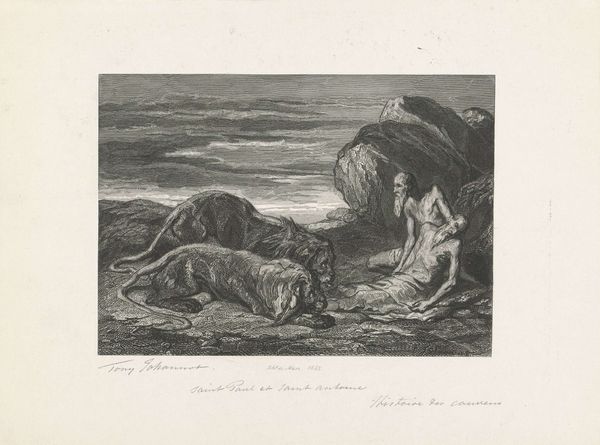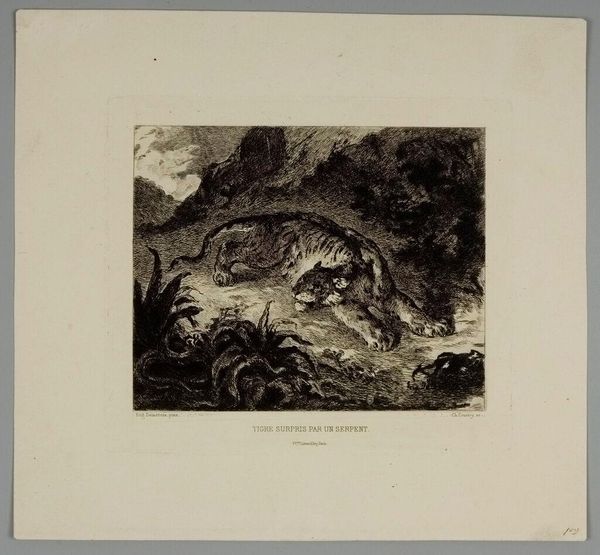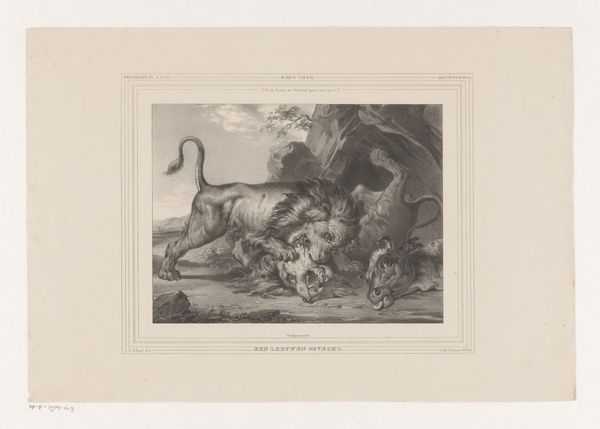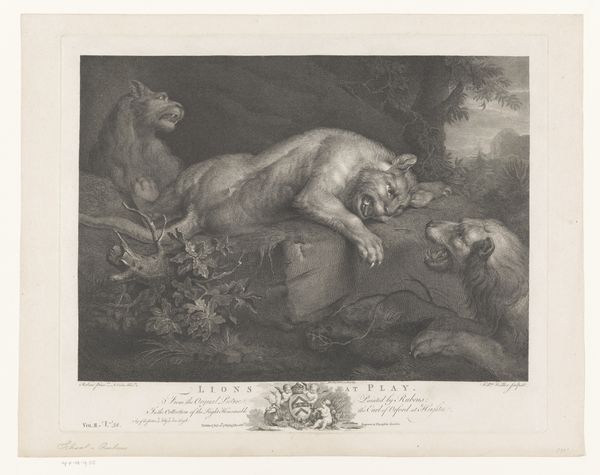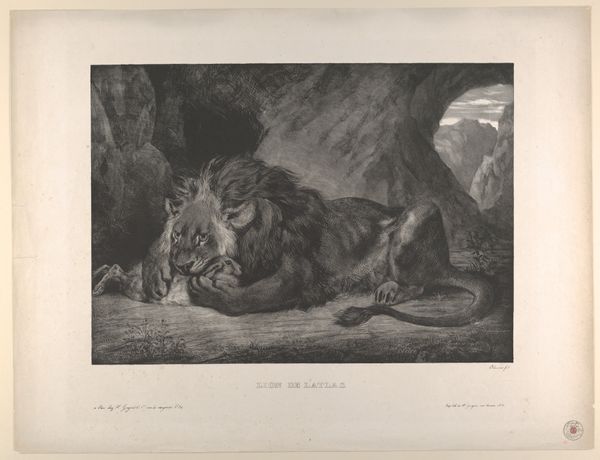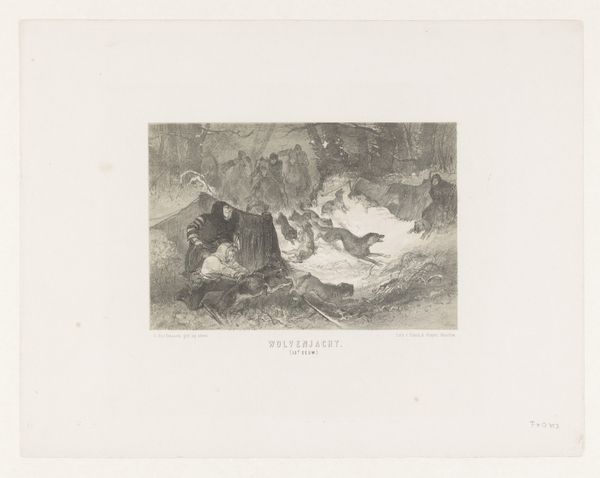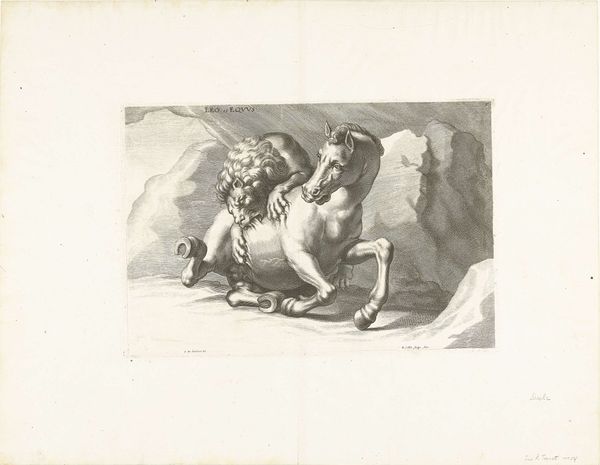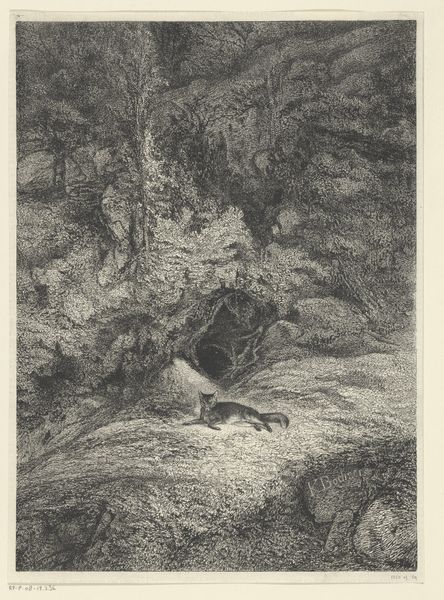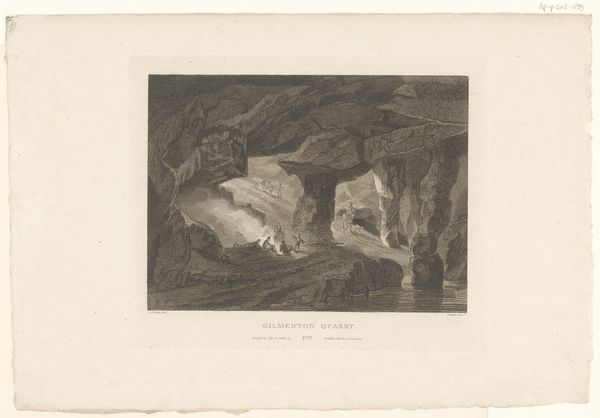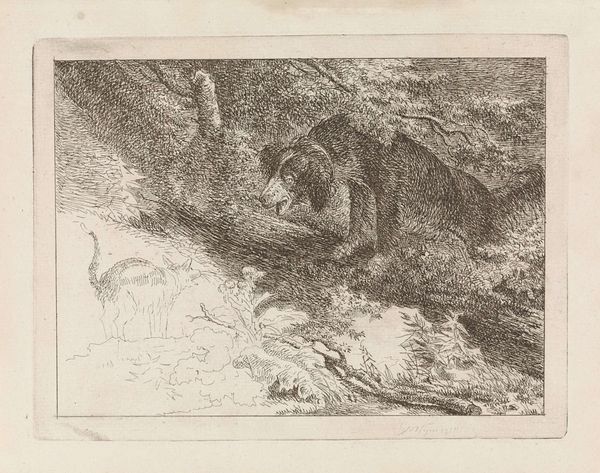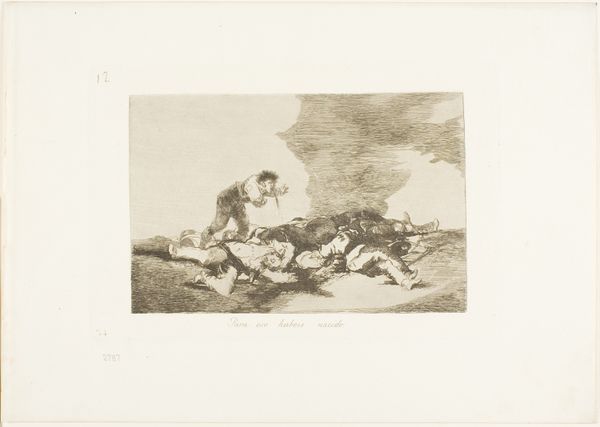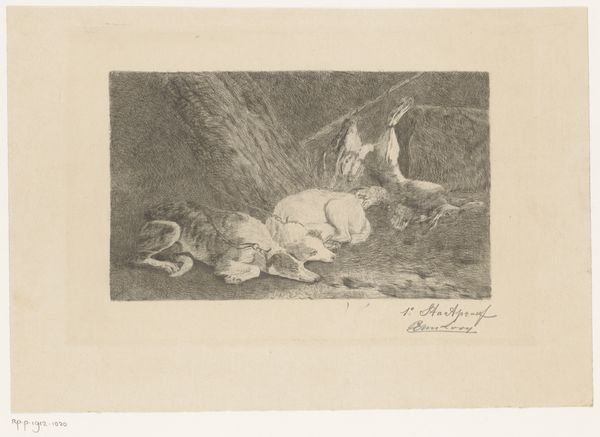
drawing, graphite
#
drawing
#
animal
#
pencil sketch
#
landscape
#
figuration
#
pencil drawing
#
romanticism
#
pen-ink sketch
#
horse
#
graphite
#
history-painting
Dimensions: height 196 mm, width 242 mm, height 256 mm, width 350 mm
Copyright: Rijks Museum: Open Domain
Théodore Géricault made this print, Lion Devouring a Horse, using a technique called lithography. It’s a printmaking process that relies on the contrast between greasy and non-greasy areas on a stone or metal plate. To create this image, Géricault would have drawn directly onto the prepared surface with a greasy crayon or ink. The stone is then treated with chemicals so that only the drawn areas attract ink. When printed, the image transfers to paper. Notice the grainy texture and the soft gradations of tone, which are characteristic of lithography. The immediacy of lithography allowed artists like Géricault to achieve effects similar to drawing. The subject matter here -- a lion brutally attacking a horse -- speaks to the Romantic era’s fascination with the power of nature and the raw energy of animal life. But the method is significant too. Lithography was a relatively new, commercial technique in the 19th century, allowing for the wider distribution of images. It effectively democratized the art world, breaking down the traditional hierarchy between painting and printmaking.
Comments
No comments
Be the first to comment and join the conversation on the ultimate creative platform.
